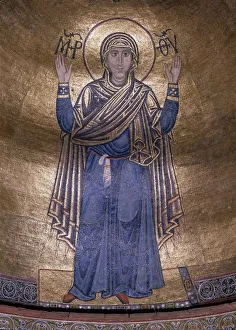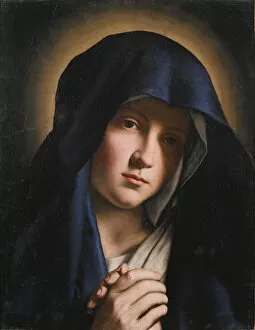Orante Collection
The art of orante, depicted in various forms and styles throughout history, showcases the profound devotion and spirituality of individuals
All Professionally Made to Order for Quick Shipping
The art of orante, depicted in various forms and styles throughout history, showcases the profound devotion and spirituality of individuals. From Byzantine Master's "The Virgin Orans" to Russian icons like "Our Lady of the Great Panagia (Orante)" and "Our Lady of the Sign, " these artworks capture the essence of prayerful contemplation. Intricate details can be observed in works such as the Ghent Altarpiece's "Detail of the Virgin Mary, " where oil on panel brings forth a sense of realism. The engraving depicting CAMUNI in a funeral or initiation scene, created using the technique called "a martellina, " adds depth to this ancient practice. A young woman with a veiled head is portrayed with arms outstretched, showcasing her devoutness. This image resonates with King Louis XV's style, characterized by its elegance and sophistication. Vice-Admiral Christopher Parker's watercolor on ivory portrait from 1785 captures his pious demeanor amidst his naval career. Similarly, Madonna Orante exemplifies divine motherhood through her serene countenance. Ancient Russian frescos from the 12th century depict The Virgin in all her glory while early 18th-century Russian iconography presents another rendition of Our Lady of the Sign. These pieces serve as testaments to faith that transcends time and cultural boundaries. Through these diverse representations, orante emerges as an enduring symbol for those seeking solace through prayer. Whether it be through Byzantine masterpieces or intricately crafted icons, this artistic expression reminds us that devotion knows no bounds - connecting humanity across centuries and cultures alike.














